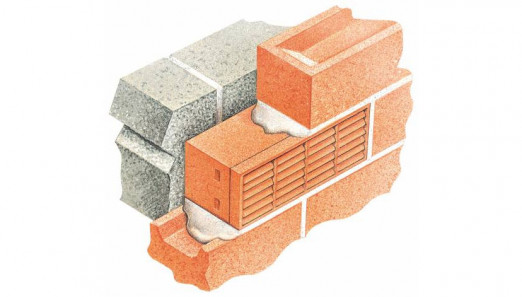Cavity Trays Ltd manufactures radon barriers and membranes, and believes it has the answer.
‘It is important one recognises radon is everywhere rather than only in certain locations’ said a Company spokesman. ‘It is simply the extent of radon gas that varies’.
‘The introduction of new Building Standards means structures are becoming more airtight. Windows and doors are fitting better, chimneystacks are less common, walls and floors are being insulated to higher levels of integrity and finish. Radon that infiltrates rooms can accumulate to a greater extent than in the past, because of these changes and the elimination of various previous structural exit opportunities.
If one thinks back to when roof space insulation levels were increased, there was an accompanying need to ventilate to dissipate resultant condensation.
Now with structures becoming more airtight, there is a different accompanying requirement – to eliminate the opportunities for radon to enter.’
Cavity Trays Ltd maintains that any reduction in radon levels (in structures) is a positive way forward, but considers a target level as proposed by the HPA to only partially address the real problem.
‘New properties could and should incorporate total footprint protection at ground level to prevent radon entering via the floors and walls’ is Cavity Trays recommendation. ‘Footprint protection includes an appropriate oversite membrane linked to radon cavity barriers that extend through the external cavity walls and terminate at the external face’.
Radon that rises underneath the structure and rises via the cavity walls is arrested and prevented from continuing upwardly. Instead it is able to discharge via cavibricks located in the external masonry under the barrier level.
Cavity Trays Ltd has for some considerable time recommended its clients incorporate total footprint protection whenever some level of radon control is required. In 2009 it commenced offering the following advice:
The current radon action level is 200 Becquerels in dwellings and 400 Becquerels in commercial buildings.
The UK Health Protection Agency (HPA) is aware of the recommendation of the World Health Organisation (WHO) to lower the radon action level. When the new level will be lowered in the UK is still unknown, however it is reasonable to accept change will be introduced eventually.
The following information is extracted from the Radon Handbook produced by the World Health Organisation International Radon Project chaired by Professor William Angell:
Indoors radon is largely caused by the way homes are designed and built. It is a long-term misconception that indoor radon is naturally occurring.
Outdoor radon concentrations are naturally occurring, but indoors radon concentrations are profoundly influenced by the way homes are designed and built. The implications of this clarification are that it places clear responsibility for radon control on:
Cavity Trays Ltd currently advises as follows:
Designers may wish to consider incorporating full protection in new projects before awaiting any regulation or radon action level changes, for the following reasons:
• To demonstrate a duty of care by addressing a known current risk and making provision to control that risk (and thus protect the inhabitants of the building to the greatest possible extent) now and in the future when action levels lower.
• To preserve asset value of a structure so it is not devalued in the future because it will not protect to new levels when implemented.
• Maintain property appeal of occupiers / users.
• If the UK follows the procedure already adopted by some countries of permitting occupation of a newly constructed property only after the property has been tested and passed a radon test, total footprint protection will become commonplace.
Building standards are changing, as are the moves towards more airtight structures. In the absence of continuous ventilation at all times sufficient to disperse accumulating radon within a room, levels will rise.
The view of Cavity Trays Ltd is unchanged. When constructing and radon control is required, Cavity Trays Ltd recommends clients provide total footprint protection.
Cavity Trays Ltd is encouraged by this week’s announcement by the HPA, but considers the affects of radon are still not being sufficiently addressed within the UK. It refers to RCE-11 published last year by the HPA in which the key points regarding the risks of lung cancer are listed.
Cavity Trays also draws comparison with neighbouring Ireland where every new home must incorporate protection and be tested. ‘There is no lottery regarding whether or not an area is marked on a map’ commented Cavity Trays spokesman, ‘a safer approach in our opinion’.
Two maps are currently available indicating radon areas in England and Wales. ‘Radon – Guidance on protective measures for new buildings’ (BRE 211) published by the BRE and ‘Indicative Atlas of Radon in England and Wales’ published by the Health Protection Agency.
Designers should be aware that they are not identical, and the extent of radon area in one does not match the extent shown in the other. Our stance of total footprint protection also avoids this anomaly.
